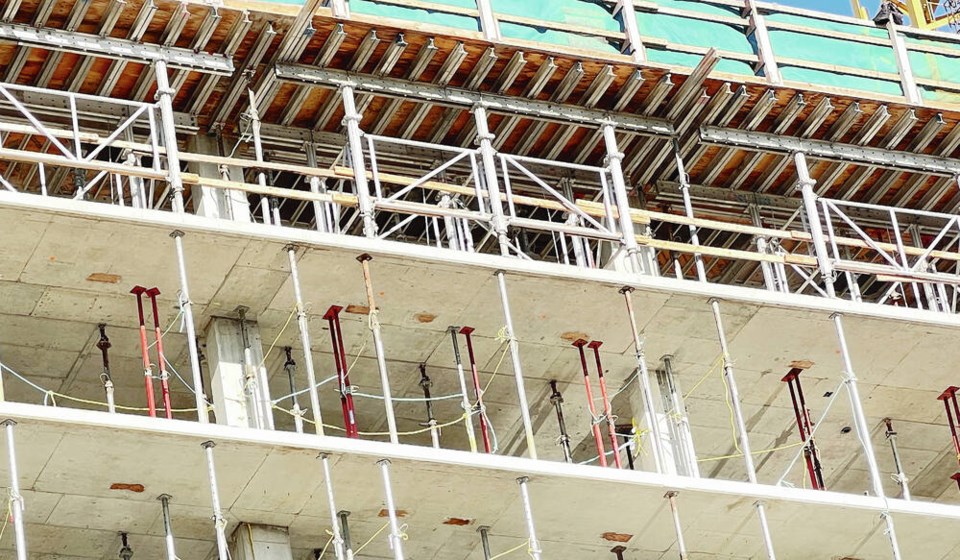A commentary by the co-leads of the Housing Justice Project.
Today, Nov. 22 is National Housing Day. To mark the occasion we call on the federal government to lead an industrial social housing strategy that puts the lowest-income residents of Canada at the front of the line.
From the 1960s through the 1980s, the federal government led construction of social housing with 50/50 cost sharing with provinces. In the mid-1980s, Canada started to cut back funding, and by the mid-1990s construction of social housing across Canada fell off a cliff.
In 1995, Ottawa passed the Canada Health and Social Transfer Act, which many point to as the nail in the coffin of Canada’s social housing legacy. The Canadian Observatory of Homelessness marks this era as the beginning of mass homelessness in this nation.
In 1972, 20 per cent of all housing built in Canada was social housing. Since the late 1990s, social housing has hovered between one and two per cent of all housing built.
The Canada Health and Social Transfer Act meant the withdrawal of the federal government from social housing investments. Provinces and territories did not pick up the task. This – in part — explains the situation renters find themselves in today.
In 2017, the Canadian government got back into housing. Launched that year, the National Housing Strategy is a 10-year federal strategy intended to improve housing outcomes and affordability for Canadians in need, including reducing long-term homelessness by 50 per cent by the 2027–28 fiscal year.
In 2019, the Government of Canada passed the National Housing Strategy Act, the first time Canada has committed to the human right to housing.
The act says that whereas housing is essential to the inherent dignity and well-being of the person … it is declared to be the housing policy of the Government of Canada to “recognize that the right to adequate housing is a fundamental human right affirmed in international law.”
Homes are like oxygen or water — utterly essential for human life. In Canada, if you do not have a home your life expectancy is about half that of the average Canadian.
What does Canada’s new right to housing law mean and what doesn’t it mean?
It means the federal government must be able to demonstrate it is making progress on ending mass homelessness. It does not mean that an individual can take the federal government to court if they become homeless. It also does not mean the government must provide government-funded housing for everyone.
The federal government must be able to demonstrate it is making progress through programs and policies on the promise that all residents of Canada will have access to housing that meets habitability and affordability standards.
The government has had four years to demonstrate progress.
Four years is not long enough to reverse almost four decades of inaction. Finland has almost ended mass homelessness after a 35-year dedicated effort. However, Finland reduced long-term homelessness by one-third in the first three years of its strategy.
So, what has the Government of Canada accomplished in the first four years of its strategy?
The parliamentary budget officer in 2021 scrutinized Canada’s efforts and concluded the impact of the National Housing Strategy supply programs had been negligible.
The Auditor General in 2022 scrutinized the strategy and concluded: “the federal government does not know whether the efforts put forward so far have improved housing outcomes for vulnerable Canadians.”
There is no doubt the housing and homelessness crisis has continued and even escalated since 2019.
The government has failed to demonstrate it is making progress on realizing the right to housing. So what must it do?
A potpourri of unlikely bedfellows have come together and created the National Housing Accord to call upon the federal government to double social housing in Canada.
The Affordability Action Council and the Social Housing and Human Rights Coalition have recently chimed in, calling for the federal government to build one million rent-geared-to-income social housing units by 2030, and a minimum of 50,000 annually for the lowest income residents of Canada.
Despite the flurry of recent housing announcements, the government has yet to commit to matching these ambitions.
Mass homelessness did not exist when we were growing up. It was caused by successive austerity governments.
The Government of Canada can reverse mass homelessness by launching a new national social housing program aimed at all who are currently homeless or at grave risk of homelessness.
Chaland was the lead author of three recent reports about the housing crisis in Greater Victoria: COVID 19: The Beginning of the End of Homelessness; Drivers of Homelessness: Findings for Action; and Filling the Gap: analytics to support housing for all in Greater Victoria.
Pauly is a professor in the University of Victoria School of Nursing, a scientist with the Canadian Institute for Substance Use Research (formerly CARBC), a member of the Renewal of Public Health Services Research Team, and a priority lead for the Canadian Observatory on Homelessness.
>>> To comment on this article, write a letter to the editor: [email protected]



